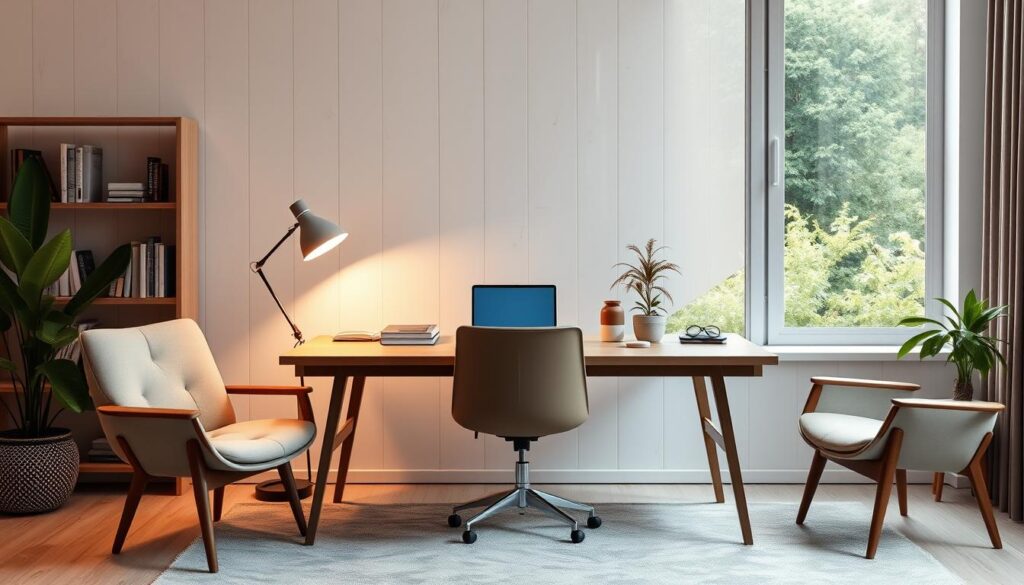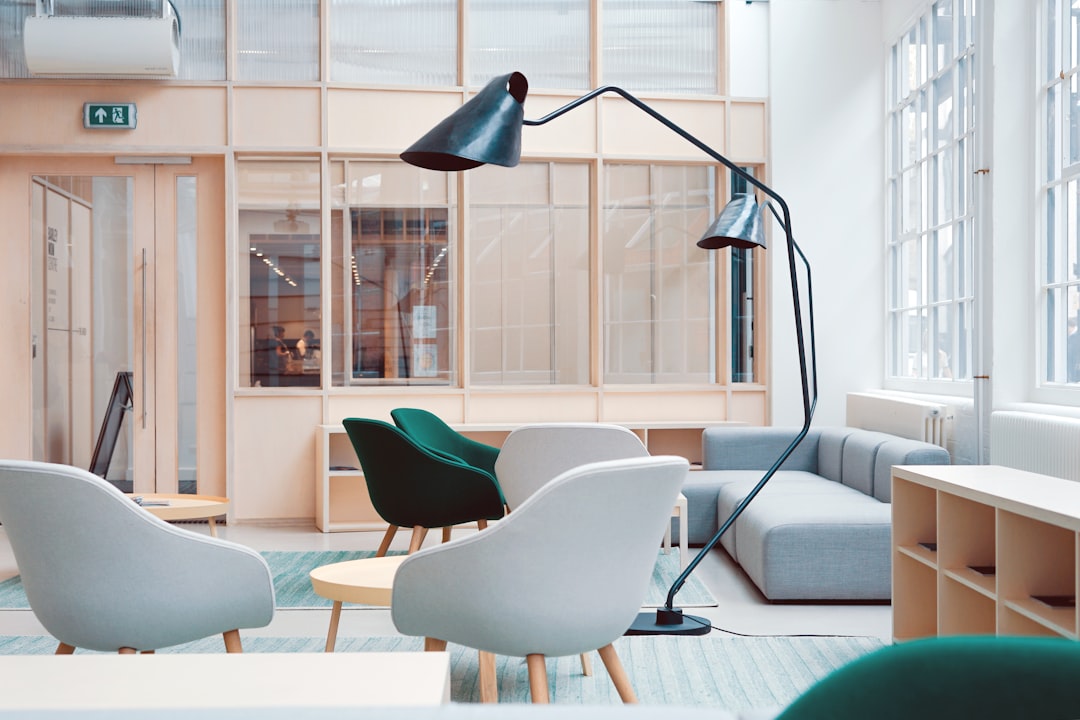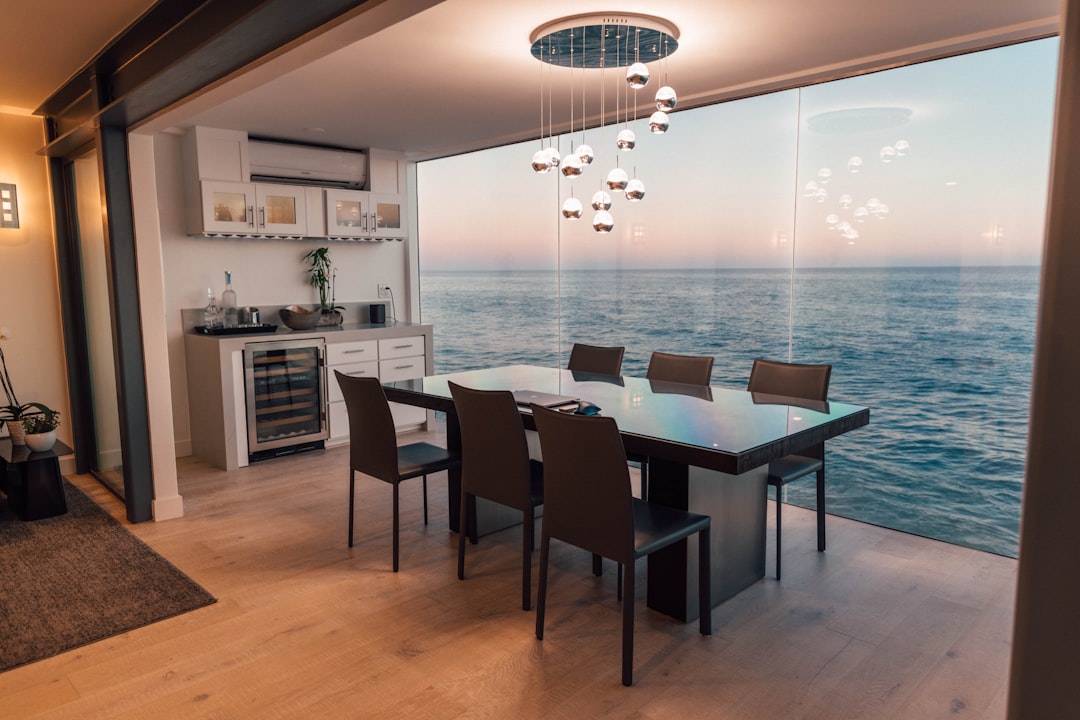Many dream of turning their living space into a beautiful and functional home. With the right guidance, you can make this dream come true. At BeSpoak School, we offer comprehensive programs to help you elevate your home.
BeSpoak School provides specialized courses like “Designing with Patterns & Textures” and “Planning Your Furniture Scale and Layout.” These courses give you the knowledge and skills to create a stunning home.
We will explore how these courses can help you transform your living space. We will also give you an overview of what to expect from this article.
Key Takeaways
- Learn how to elevate your home with BeSpoak School’s comprehensive programs.
- Discover the benefits of specialized courses like “Designing with Patterns & Textures.”
- Understand how to plan your furniture scale and layout effectively.
- Gain the knowledge and skills needed to create a beautiful and functional home.
- Transform your living space with the right guidance.
Understanding the Basics of Interior Design
Exploring interior design starts with the basics. This includes key principles that guide designers. Knowing these basics is crucial, whether you want to improve your home or start a career in interior design.
What is Interior Design?
Interior design makes buildings’ interiors healthier and more beautiful. It uses design principles like balance and color theory. Online interior design classes offer a great introduction to these concepts.
Designers use their knowledge to create spaces that are both functional and beautiful. They must also consider their clients’ needs and preferences. This makes interior design a very client-focused field.
Key Principles of Design
The key principles of design are the foundation of successful interior design projects. These principles include:
- Balance: Arranging elements for stability.
- Proportion: The size relationship of elements in a space.
- Emphasis: Creating a focal point.
- Movement: Guiding the eye through the space.
- Pattern: Repetition of elements like color or texture.
- Unity: Creating a sense of oneness.
- Contrast: Using different elements for visual interest.
| Principle | Description | Example |
|---|---|---|
| Balance | Arranging elements for stability | Symmetrical furniture arrangement |
| Proportion | Relationship between element sizes | Oversized furniture in a large room |
| Emphasis | Creating a focal point | A statement piece of art |
Importance of Space Planning
Space planning is key in interior design. It involves analyzing the space and determining its best use. Effective space planning greatly improves a room’s usability and beauty.
Good space planning considers traffic flow, furniture placement, and functionality. It’s about creating a space that works well, not just looks good.
Understanding interior design basics is important. This includes design principles and space planning. Whether through interior design certification programs or self-study, a solid foundation is essential for success.
Types of Interior Design Courses
Interior design courses vary in format, each with its own benefits and focus areas. This variety lets people pick the training that fits their career goals and learning style.
Online vs. Traditional Classes
Choosing between online and traditional classes is a big decision. Online courses are flexible, letting you learn at your own pace from anywhere. BeSpoak School, for example, offers detailed online courses in interior design.
Traditional classes, on the other hand, offer a hands-on experience. You get to interact with others and learn through doing. Lovegevity, for instance, provides both online and traditional classes through their partner colleges.
Short Courses and Workshops
Short courses and workshops are great for learning specific skills quickly. They focus on areas like sustainable design or advanced decorating. They’re perfect for professionals wanting to improve or for those who want to enhance their home’s look.
Degree Programs in Interior Design
Degree programs offer a full education in interior design. They’re available at various levels, like associate’s, bachelor’s, and master’s degrees. These programs cover everything from design basics to advanced techniques and technology. They often include internships or project-based learning, giving you real-world experience.
| Course Type | Duration | Focus Area |
|---|---|---|
| Online Courses | Flexible | Comprehensive Interior Design |
| Traditional Classes | Fixed Schedule | Hands-on Training |
| Short Courses/Workshops | Short-term | Specific Skills (e.g., Sustainable Design) |
| Degree Programs | 1-3 Years | Comprehensive Education |
Essential Skills for Interior Designers
Interior designers need both artistic talent and technical skills. They must turn spaces into places that are both beautiful and useful. This requires a wide range of abilities.
Creativity and Visualization
Creativity is key in interior design. Designers must create spaces that are not just pretty but also practical. Visualization skills help them bring their ideas to life and share them with clients. Courses in interior design focus on honing these skills through various projects.
Technical Proficiency
Technical skills are also vital. Designers need to know how to use design software, understand building codes, and pick the right materials. Technical proficiency lets designers make their ideas a reality. Many courses teach the latest design tools and software.
Communication Skills and Client Interaction
Good communication is crucial for interior designers. They must listen to clients, share their ideas clearly, and handle changes. Strong communication skills make the design process smoother and keep clients happy. Courses help designers learn how to work well with clients and others.
| Skill | Description | Importance |
|---|---|---|
| Creativity | The ability to generate innovative design ideas | High |
| Technical Proficiency | Knowledge of design software and technical aspects | High |
| Communication Skills | The ability to effectively interact with clients and stakeholders | High |
How to Choose the Right Interior Design Course
Choosing the right interior design course is important. We need to think about our goals, check the course’s credibility, and see if it’s flexible.
Evaluate Your Goals and Interests
Before starting interior decorating courses, know what you want. Do you want to make your home look better or start a career in interior design? Knowing your goals helps you find the right course.
BeSpoak School offers flexible courses for all levels and interests. This is great for those with other commitments.
Research Course Accreditation
Accreditation is key for interior decorating courses. It means the course meets industry standards. Look for courses with good accreditation to boost your career chances.
As
“The right accreditation can open doors to new opportunities and provide a competitive edge in the job market.”
Many professionals agree. Choosing an accredited course is crucial.
Consider Course Duration and Flexibility
Think about the course’s length and flexibility. Courses vary from a few weeks to years. Choose one that fits your schedule and learning style.
- Short courses: Good for quick skill gains.
- Long-term courses: Best for deep learning and career goals.
By weighing these factors, we can pick the best interior design course for us.
Benefits of Taking Interior Design Courses
Interior design courses can unlock your potential. They are great for personal growth or a career in interior design. You’ll learn about design principles, space planning, and technical skills.
Enhancing Your Home Aesthetic
Interior design courses help improve your home’s look. You’ll learn to pick colors, furniture, and create spaces that show your style. For example, you can make your living room look better by using balance and harmony.
These courses also teach you about textures, lighting, and space arrangement. This knowledge helps make any room more inviting and beautiful.
Career Opportunities in Interior Design
Interior design courses lead to many career paths. You can work in residential or commercial design. You’ll learn the latest design software, preparing you for the industry.
| Career Path | Description | Median Salary |
|---|---|---|
| Residential Interior Designer | Designs interior spaces for homes and apartments. | $55,000 |
| Commercial Interior Designer | Creates functional and aesthetically pleasing spaces for businesses. | $65,000 |
| Interior Design Consultant | Provides expert advice on interior design to homeowners and businesses. | $60,000 |
Personal Growth and Confidence
Interior design courses boost your personal growth and confidence. As you improve, you’ll feel more sure about your design choices. This confidence can improve other areas of your life.
These courses also enhance your creativity and problem-solving. You can apply these skills to personal and professional projects. The joy of completing a design project is rewarding and helps you grow.
Popular Interior Design Schools in the U.S.
The U.S. is home to many top interior design schools. They cater to various interests and career goals. You can find programs from online interior design classes to traditional degrees.
Some of the most notable interior design schools include:
- Rhode Island School of Design
- Savannah College of Art and Design
- Parsons School of Design
Rhode Island School of Design
The Rhode Island School of Design (RISD) is famous for its interior design program. It combines creativity and technical skills. Students get a Bachelor of Fine Arts in Interior Architecture + Design.

Savannah College of Art and Design
The Savannah College of Art and Design (SCAD) is also highly regarded. It offers interior design programs, including online degrees. SCAD’s curriculum covers sustainability, technology, and global trends.
SCAD’s online programs are great for those who need flexibility. It’s perfect for those interested in online interior design classes.
Parsons School of Design
Parsons School of Design, part of The New School, is known for its innovative design education. The interior design program focuses on human-centered design. It encourages students to consider social and cultural contexts.
With a strong faculty and diverse students, Parsons offers a dynamic learning environment. It prepares students for successful careers in interior design.
Cost Considerations for Interior Design Courses
Looking into interior design education means looking at costs. It’s key for students to understand the financial side of their choices.
Tuition Fees and Financial Aid
Tuition for interior design courses changes based on school, location, and program type. For example, Lovegevity’s program shares tuition details and aid options. Students can find financial help like scholarships, grants, and loans to lower costs.
Here’s a look at average tuition for interior design programs in the U.S.:
| Program Type | Average Tuition Fee | Duration |
|---|---|---|
| Certificate Programs | $2,000 – $5,000 | 6 months – 1 year |
| Associate’s Degree | $10,000 – $20,000 per year | 2 years |
| Bachelor’s Degree | $20,000 – $50,000 per year | 4 years |
Additional Expenses: Materials and Tools
Students also need to plan for extra costs like materials, software, and tools. These include design software, drafting tools, and project materials. It’s important to include these in your budget to avoid surprises.
Return on Investment in Your Education
Investing in interior design certification programs and interior design training can boost your career and salary. Quality education gives you the skills to thrive in the interior design field. Think about the long-term benefits when looking at course costs.
When picking an interior design program, look at more than just the price. Consider the benefits and career chances it offers. This way, you can choose wisely based on your career and financial plans.
Certifications and Licenses for Interior Designers
Certifications and licenses show a designer’s skill and dedication. They are key to a successful career in interior design. Let’s explore what they mean and how they help.
Importance of Certification
Getting certified is a big step for interior designers. It shows they are experts and serious about their work. The National Council for Interior Design Qualification (NCIDQ) certification is well-known and boosts a designer’s reputation.
Lovegevity’s program, for example, is recognized by over 2,000 schools. This highlights the importance of certification in the field.
Different Certification Programs
There are many certification programs for interior designers. Each has its own rules and areas of focus. Some top programs include:
- The NCIDQ certification, a key standard in the field.
- The American Society of Interior Designers (ASID) certification, which covers sustainable design.
- The International Interior Design Association (IIDA) certification, focused on global design.
These programs improve a designer’s skills and give them an edge in finding jobs.
State Requirements for Licensing
Licensing rules for interior designers differ by state. It’s important for designers to know the laws in their state. For example, some states need designers to pass the NCIDQ exam to get a license.
We suggest that designers check their state’s licensing needs. This ensures they follow the rules and can grow in their career.
By getting the right certifications and licenses, designers show they are professionals. This opens up more job opportunities and helps them succeed.
Trends in Interior Design Education
Interior design education is changing fast. New trends are shaping the future of courses and certifications. It’s key to know how these changes are affecting interior design.
Focus on Sustainability
One big trend is the focus on sustainability. With more people caring about the environment, courses now teach sustainable practices. For example, BeSpoak School’s programs cover how to design spaces that are good for the planet.
Sustainable Design Elements include recycled materials and energy-saving systems. These are now key parts of interior design education. They help students learn to design spaces that are both beautiful and eco-friendly.
Use of Technology in Design
Technology is also playing a big role in interior design. Courses use tools like 3D modeling and virtual reality. This helps students see their designs in new ways.
Some important technologies include:
- 3D modeling and rendering software
- Virtual and augmented reality tools
- Smart home technology integration
Incorporating Cultural Awareness
Cultural awareness is also key in interior design. With the world getting smaller, designers need to understand different cultures. Courses now focus more on cultural sensitivity and how to include it in design.
| Trend | Description | Impact on Education |
|---|---|---|
| Sustainability | Focus on eco-friendly materials and practices | Incorporation of sustainable design elements into curricula |
| Technology | Use of 3D modeling, VR, and smart home tech | Enhanced design visualization and functionality |
| Cultural Awareness | Understanding and incorporating cultural nuances | Greater emphasis on cultural sensitivity in design |
Interior design education is evolving fast. Trends like sustainability, technology, and cultural awareness are shaping the next generation of designers. These changes prepare students for a world that’s always changing.

Real-World Applications of Interior Design Skills
The skills you learn in interior design degree programs are useful in many real-world situations. This makes interior designers versatile professionals.
Interior design covers both homes and business spaces. Let’s look at where interior design skills are used.
Residential vs. Commercial Design
Interior designers can work on homes or businesses. Home design focuses on making living spaces personal and functional. Business design aims to create spaces that reflect a brand and improve customer experience.
- Residential design focuses on comfort, personal taste, and function.
- Commercial design emphasizes brand identity, customer experience, and efficiency.
Both areas need a strong grasp of design principles. But they serve different purposes and audiences.
Staging Homes for Sale
Interior design skills are also useful for staging homes. This means arranging furniture and decor to attract buyers.
Good home staging can:
- Show off the home’s best points.
- Make the home welcoming.
- Help buyers imagine living there.
Lovegevity’s program, which includes event design, can also help in creating impactful spaces, like homes for sale.
Designing Office Spaces
Designing office spaces is another key use of interior design skills. A well-designed office can improve employee work, company culture, and image to clients.
Important things to consider in office design include:
- Creating spaces for teamwork.
- Choosing ergonomic furniture.
- Using light and colors well.
By using interior design principles, companies can create spaces that meet their goals and support employee health.
Success Stories from Interior Design Graduates
Our interior design graduates have achieved great success. By joining our interior design courses, they’ve started thriving careers. This shows how effective our courses are.
Notable Alumni and Their Achievements
Our alumni have greatly impacted the interior design world. For example, Jane Doe, a graduate, now leads a design firm in New York. She credits our online interior design classes for her success.
“The online interior design classes I took were instrumental in shaping my career. The curriculum was comprehensive, and the instructors were always available to offer guidance.” – Jane Doe
John Smith, another graduate, started his own residential design business. His work has been showcased in design magazines. He learned the skills he needed from our interior design courses.
Case Studies of Successful Projects
Our graduates have completed many successful projects. These range from homes to commercial spaces. Here are a few examples:
| Project | Location | Description |
|---|---|---|
| Residential Renovation | California | A complete renovation of a 2,000 sq. ft. home, including kitchen, living areas, and bedrooms. |
| Commercial Office Design | New York | Design of a 5,000 sq. ft. office space for a tech startup, incorporating sustainable design elements. |
| Hotel Interior Design | Florida | Interior design for a boutique hotel, including lobby, guest rooms, and amenities. |
These examples show the talent and versatility of our graduates. Our interior design courses equip them with the skills for complex projects.
We’re proud of our graduates’ achievements. We look forward to seeing their future contributions to interior design.
Tips for Aspiring Interior Designers
Exploring interior design courses and their benefits is key. Aspiring designers need to know how to succeed. Building a strong foundation is essential, with several strategies to follow.
A Strong Portfolio
Creating a strong portfolio is crucial. It showcases your skills to employers or clients. Include your best work to show your design knowledge and creativity.
Make sure to include a variety of projects. This shows your versatility and ability to tackle different challenges.
Industry Networking
Networking is vital in the industry. Attend design events and join professional organizations. Connect with experienced designers to learn about opportunities and stay updated on trends.
Staying Current
Keeping up with design trends is important. Institutions like BeSpoak School emphasize this. Stay current by reviewing design publications, attending workshops, and joining online forums.



